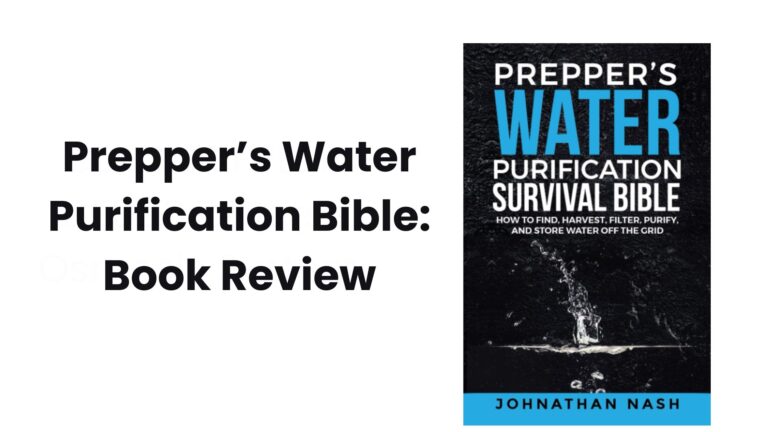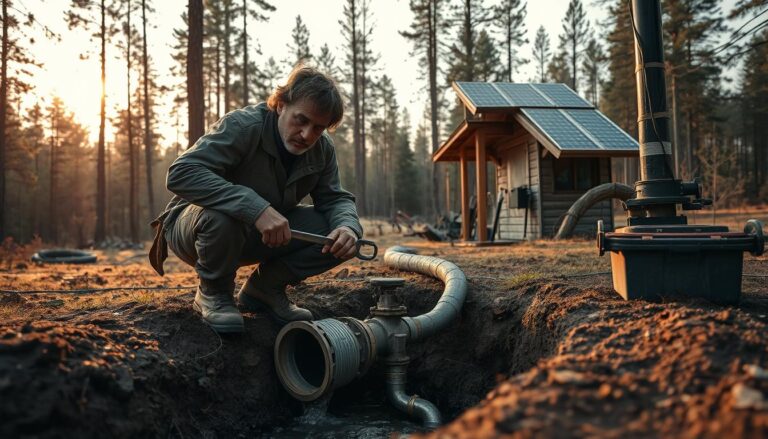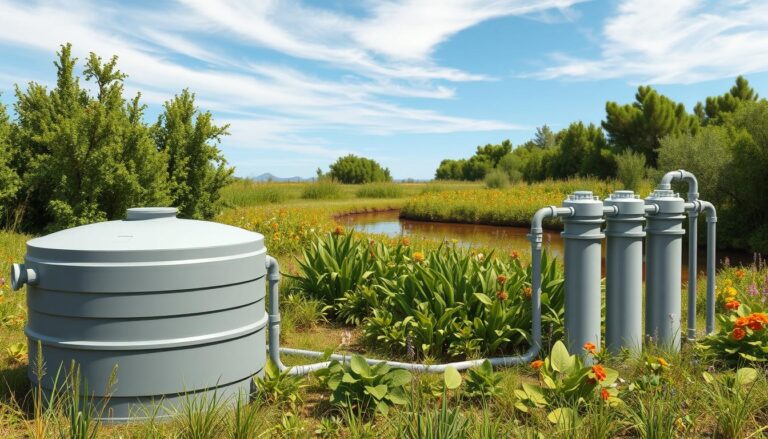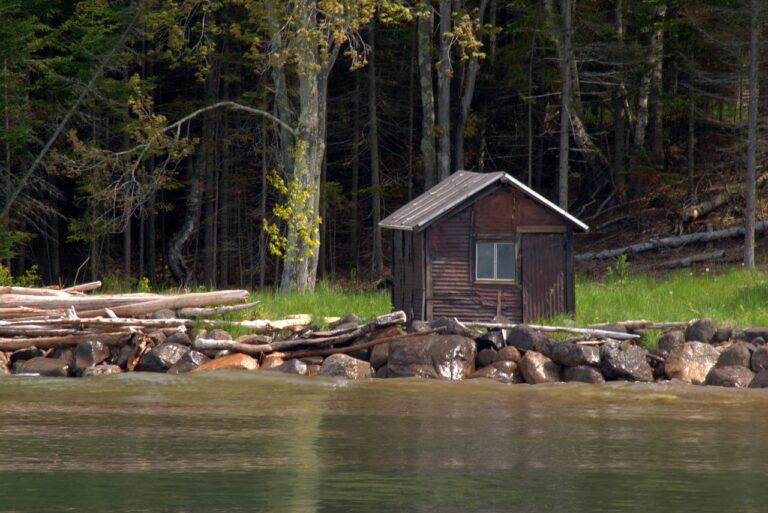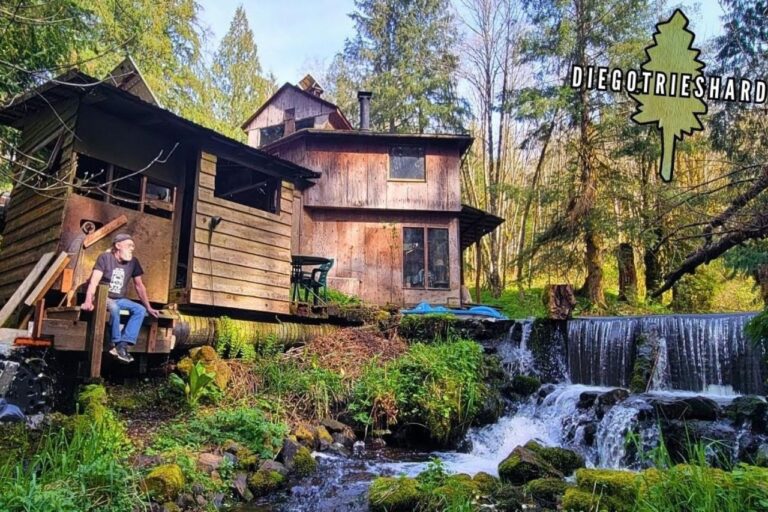DIY Guide: Constructing an Off-Grid Water Well
Can you imagine living in a remote area, completely disconnected from the municipal water supply, yet still having access to a reliable and self-sufficient water source? For many, this is a reality, and having a well as a primary water source is a crucial aspect of off-grid living.
Constructing an off-grid water well is a significant undertaking, but with the right guidance, it can be a rewarding DIY project. In this article, we will walk you through the process of building your own off-grid water well, highlighting the benefits and key considerations along the way.
Key Takeaways
- Understand the importance of a self-sufficient water source for off-grid living
- Learn the basic steps involved in constructing an off-grid water well
- Discover the benefits of having a well as a primary water source
- Identify key considerations for a successful DIY off-grid well drilling project
- Gain insights into the process of building a reliable off-grid water well
Understanding Off-Grid Water Wells
For those seeking independence from municipal water supplies, off-grid water wells offer a viable solution. An off-grid water well system is designed to provide a consistent and reliable source of clean water, free from the constraints of public water utilities.
What Makes a Well “Off-Grid”
An off-grid well is typically characterized by its independence from public water supplies and its ability to be self-sustaining. This is often achieved through the use of renewable energy sources, such as solar or wind power, to operate the well pump.
Types of Off-Grid Water Wells
There are several types of off-grid water wells, including dug wells, driven wells, and drilled wells. Each type has its own advantages and is suited to different geological conditions.
Benefits of Having Your Own Water Source
The benefits of off-grid wells include having a consistent water supply year-round and reducing reliance on municipal water. This can lead to significant cost savings and increased self-sufficiency.
Planning Your Off-Grid Water Well Project
A successful off-grid water well project begins with thorough planning, including legal considerations and water table assessment. Before you start drilling, it’s essential to understand the complexities involved in creating a reliable and sustainable water source.
Legal Considerations and Permits
One of the first steps in planning your off-grid water well is to navigate the legal landscape. This includes obtaining necessary permits and complying with local regulations. For more detailed information on the legal aspects and construction processes, you can visit resources on well water construction. Ensuring you are legally compliant will save you from potential fines and project halts.
Water Table Assessment
Assessing the water table is critical to determine the feasibility of your off-grid well project. This involves understanding the groundwater levels and quality in your area. A thorough assessment will help you decide on the depth and type of well that is most suitable.
Timeline and Budget Planning
Creating a realistic timeline and budget is vital for the success of your project. This includes estimating costs for drilling, equipment, and potential contingencies. A well-planned budget ensures that your project remains financially viable.
By carefully planning your off-grid water well project, you can avoid common pitfalls and ensure a reliable source of clean water for years to come.
Selecting the Ideal Location for Your Well
When it comes to constructing an off-grid water well, the first step is selecting the ideal location. This decision is critical as it affects not only the well’s yield but also its longevity and the quality of the water it produces.
Geological Considerations
The geology of your land plays a significant role in determining the suitability of a location for your well. Different types of rock and soil have varying abilities to store and transmit water. For instance, areas with fractured rock or sandy soils tend to be more productive for wells because they can store more water.
It’s essential to conduct a thorough geological survey to understand the subsurface conditions. This might involve consulting with local experts or conducting tests to determine the water-bearing potential of different geological formations.
Distance from Contamination Sources
Another crucial factor is the distance of your well from potential contamination sources. Sources of contamination can include agricultural runoff, septic systems, and industrial waste. Ensuring your well is sufficiently far from these sources is vital to maintaining water quality.
Regulations often specify minimum distances for wells from potential contaminants, but it’s wise to exceed these minimums whenever possible to provide an extra layer of protection.
Accessibility Factors
The accessibility of your well location is also an important consideration. You’ll need to ensure that the location is accessible for drilling equipment and, later, for maintenance and potentially for pumping equipment.
Seasonal Water Table Fluctuations
Understanding how the water table fluctuates with the seasons is crucial. In areas where the water table is significantly lower during certain times of the year, your well may need to be deeper to ensure a consistent water supply.
Consulting with local hydrogeologists or well drillers can provide valuable insights into these fluctuations and help you plan accordingly.
Essential Tools and Materials for Well Construction
Before you start drilling, it’s crucial to gather the essential tools and materials needed for constructing an off-grid water well. The right equipment ensures a safe and reliable water supply.
Drilling Equipment Options
Choosing the right drilling equipment is vital for the success of your off-grid water well project. There are several options available, including hand augers, driven point wells, percussion drilling, and rotary drilling. Each method has its advantages and is suited for different geological conditions.
- Hand Auger: Ideal for shallow wells and soft soil.
- Driven Point Wells: Suitable for sandy or gravelly soil.
- Percussion Drilling: Effective for hard rock formations.
- Rotary Drilling: Versatile and efficient for various geological conditions.
Casing and Well Components
Proper casing and well components are critical for maintaining the integrity of your well. The casing prevents contamination and ensures the well’s structural integrity.
| Component | Description | Material |
|---|---|---|
| Casing | Pipe that lines the well | Steel, PVC, or concrete |
| Screen | Allows water to enter the well | Stainless steel or PVC |
| Cap | Seals the top of the well | Cast iron or PVC |
Safety Equipment
Safety should be a top priority when constructing an off-grid water well. Essential safety equipment includes gloves, safety glasses, a first aid kit, and a hard hat.
“Safety is not just a precaution, it’s a necessity when working with heavy machinery and in potentially hazardous environments.”
Where to Source Materials
You can source the necessary materials from hardware stores, specialized well drilling suppliers, or online retailers. It’s advisable to compare prices and quality before making a purchase.
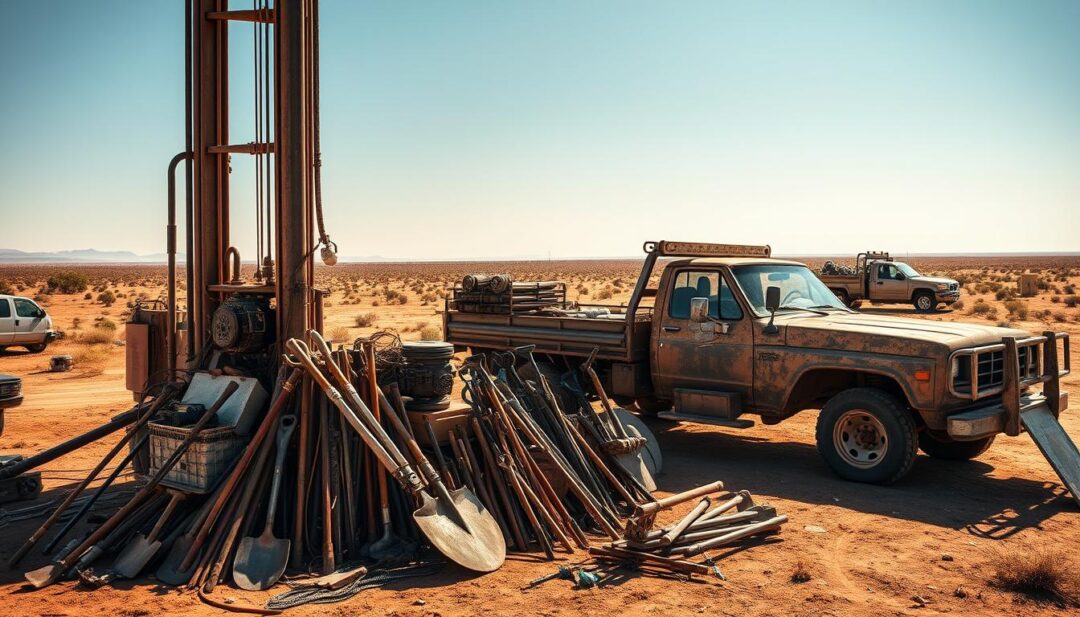
How to Make an Off-Grid Water Well: Preparation Steps
The journey to having your own off-grid water well begins with meticulous preparation and planning. Before the actual drilling starts, several crucial steps must be taken to ensure the project’s success and safety.
Site Clearing and Preparation
Clearing the site is the first physical step in preparing for your off-grid water well. This involves removing any debris, trees, or obstacles that could interfere with the drilling process or the well’s operation. Proper site clearing not only facilitates easier access but also reduces the risk of contamination.
Setting Up Your Work Area
Once the site is cleared, setting up your work area is the next step. This includes laying out your equipment, ensuring there’s a stable and safe working environment. It’s essential to have a well-organized workspace to enhance efficiency and safety.
Safety Precautions Before Drilling
Safety should always be the top priority. Before drilling begins, ensure that all necessary safety precautions are in place. This includes wearing appropriate protective gear and having emergency response plans. Safety precautions are crucial for preventing accidents and ensuring a smooth drilling process.
Creating a Drilling Plan
A detailed drilling plan is essential for the success of your off-grid water well project. This plan should include the drilling method, expected depth, and potential challenges. Key elements to consider when creating your drilling plan include:
- Geological surveys to predict water table depth
- Drilling technique based on soil and rock type
- Casing and screening requirements
By having a comprehensive plan, you canminimize risks and optimize the drilling process.
Sustainable Off-Grid Well Drilling Techniques
Sustainable well drilling is a key component of off-grid living, providing independence from municipal water supplies. When it comes to constructing an off-grid water well, the drilling technique used can significantly impact the environment and the well’s efficiency.
Hand Auger Method
The hand auger method is a manual, environmentally friendly technique suitable for shallow wells. It’s cost-effective and requires minimal equipment, making it ideal for DIY projects. However, it can be labor-intensive and limited to certain soil types.
Driven Point Wells
Driven point wells involve driving a pointed screen into the ground, allowing for water extraction from shallow aquifers. This method is simple and inexpensive but is generally limited to areas with loose soil and shallow water tables.
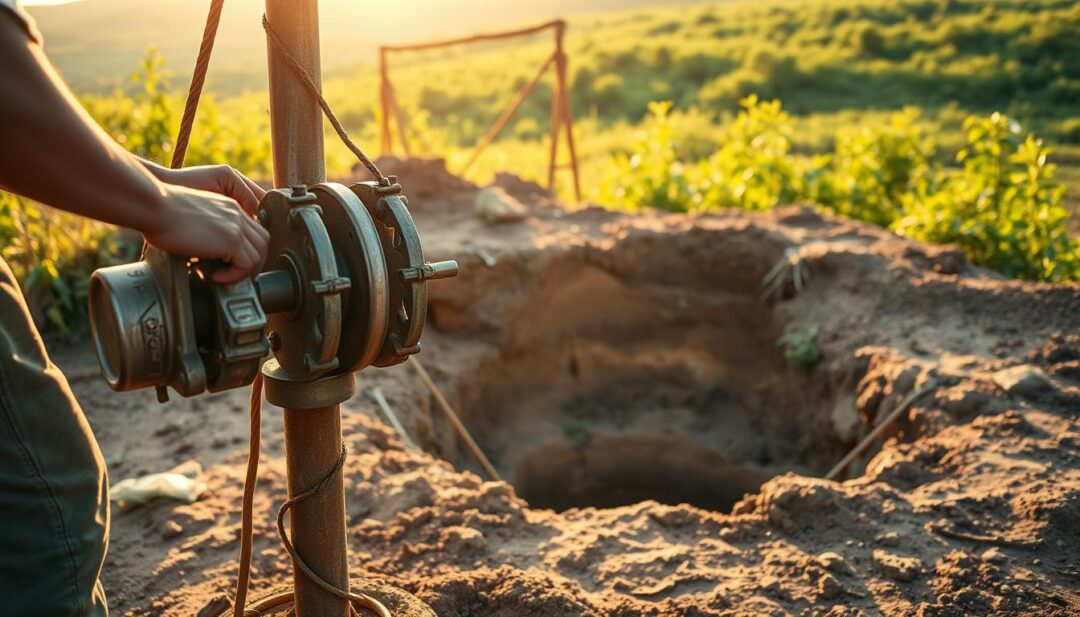
Percussion Drilling
Percussion drilling, also known as cable tool drilling, is a technique that involves repeatedly lifting and dropping a heavy drilling bit to break through the ground. It’s effective for various geological formations and can be used for deeper wells.
Rotary Drilling for DIYers
Rotary drilling is a faster method that uses a rotating drill bit to penetrate the earth. For those considering a DIY approach, it’s essential to understand that rotary drilling requires significant equipment and expertise. For more information on the latest innovations in drilling rigs, visit Discover the Latest Innovations in Water Well Drilling.
Step-by-Step Well Construction Process
The process of creating an off-grid water well encompasses various stages, from initial drilling to final testing. Understanding these steps is crucial for a successful well construction project.
Drilling the Well Hole
Drilling is the first major step in constructing an off-grid water well. The method chosen depends on the geology of the area and the depth of the water table. Common drilling methods include hand auger, driven point, percussion, and rotary drilling.
Drilling Techniques:
- Hand Auger: Suitable for shallow wells and soft soil.
- Driven Point: Effective for sandy or gravelly formations.
- Percussion Drilling: Ideal for hard rock formations.
- Rotary Drilling: Versatile and efficient for various geological conditions.
Installing Casing and Screen
Once the well hole is drilled, the next step is to install the casing and screen. The casing provides structural integrity to the well, while the screen allows water to enter and filters out sediment.
Key Considerations:
- Casing material should be durable and resistant to corrosion.
- Screen size and slot size must be appropriate for the aquifer material.
Developing the Well
Well development is a critical step that involves removing fine sediment and debris from the well, enhancing its yield and clarity.
Testing for Water Flow
After development, testing for water flow is essential to determine the well’s productivity and sustainability.
| Test Parameter | Description | Importance |
|---|---|---|
| Flow Rate | Volume of water produced per unit time | Indicates well’s productivity |
| Drawdown | Change in water level during pumping | Affects well’s sustainability |
| Water Quality | Chemical and biological analysis | Ensures water is safe for consumption |
Creating a Sanitary Seal
Finally, creating a sanitary seal around the wellhead is vital to prevent contamination. This involves sealing the annular space between the casing and the borehole wall and protecting the wellhead.
“A well-constructed sanitary seal is the first line of defense against potential contaminants that could compromise the well water quality.”
Off-Grid Well Pump Installation
Once you’ve drilled your off-grid well, the next critical step is installing a suitable pump system. This crucial component is responsible for bringing water from your well to the surface, making it accessible for various uses.
Choosing the Right Pump Type
Selecting the appropriate pump for your off-grid well depends on several factors, including the well’s depth, water table level, and your specific water needs. Submersible pumps are often preferred for deeper wells due to their efficiency and ability to push water to the surface. For shallower wells, jet pumps or hand pumps might be more suitable.
Solar-Powered Pump Systems
Solar-powered pump systems offer an eco-friendly and cost-effective solution for off-grid wells. These systems harness solar energy to power the pump, reducing reliance on fossil fuels and lowering operational costs. When considering a solar-powered pump, it’s essential to assess your solar resource availability and the system’s compatibility with your well’s characteristics.
Hand Pump Installation
Hand pumps provide a simple, low-cost, and reliable option for off-grid water supply, especially in areas with limited access to electricity. Installing a hand pump involves selecting the right type for your well’s depth and diameter, followed by a straightforward installation process that typically requires minimal equipment.
Pump Testing and Troubleshooting
After installing your off-grid well pump, thorough testing is necessary to ensure it’s functioning correctly. This involves checking the pump’s performance under various conditions and troubleshooting any issues that arise. Common problems might include low water pressure, pump failure, or excessive noise, each requiring specific diagnostic and repair strategies.
Water Treatment Solutions for Off-Grid Wells
Off-grid well water treatment is a vital process that requires careful consideration of various filtration and purification methods to ensure the water is safe for consumption.
Testing Your Well Water Quality
Before selecting a treatment solution, it’s essential to test your well water quality. This involves analyzing the water for various contaminants, including bacteria, viruses, and chemical pollutants. You can use DIY water testing kits or hire a professional to conduct a comprehensive analysis.
Filtration Options
There are several filtration options available for off-grid well water treatment. These include:
- Activated carbon filters
- Reverse osmosis systems
- Ultraviolet (UV) light disinfection
Each of these methods has its advantages and is effective against different types of contaminants.
Natural Purification Methods
In addition to mechanical filtration systems, natural purification methods can also be effective. These include:
- Boiling water
- Using natural filters like sand and gravel
- Implementing a solar still
Creating a Redundant Treatment System
To ensure maximum safety, consider creating a redundant treatment system. This involves implementing multiple treatment methods in series to provide an additional layer of protection against waterborne pathogens.
| Treatment Method | Effectiveness | Cost |
|---|---|---|
| Activated Carbon Filter | High against chemicals | Moderate |
| Reverse Osmosis | High against dissolved solids | High |
| UV Light Disinfection | High against bacteria and viruses | Moderate |
By combining different treatment methods and testing your water regularly, you can ensure a safe and reliable off-grid water supply.
Off-Grid Water Well Cost Breakdown
Understanding the financial aspects of constructing an off-grid water well is crucial for a successful project. The costs associated with off-grid water wells can be significant, and a detailed breakdown is essential for effective budgeting.
DIY vs. Professional Installation Comparison
Choosing between DIY and professional installation for your off-grid water well can significantly impact your overall costs. DIY installation can save on labor costs, but it requires specialized equipment and expertise.
Equipment Investment Analysis
The initial investment in equipment for an off-grid water well includes drilling machinery, casing, and pumps. The cost of this equipment can vary widely based on the well’s depth and type.
| Equipment | Cost Range |
|---|---|
| Drilling Machinery | $1,000 – $5,000 |
| Casing | $500 – $2,000 |
| Pumps | $200 – $1,000 |
Long-Term Savings Calculation
While the initial costs of an off-grid water well can be high, the long-term savings on water bills can be substantial. Calculating these savings over time can help justify the initial investment.
Potential Tax Incentives and Rebates
Many governments offer tax incentives and rebates for off-grid water projects, which can help offset the initial costs. Researching these opportunities is crucial for maximizing your savings.
Conclusion
Constructing an off-grid water well is a significant step towards achieving self-sufficiency and sustainability. By following this DIY guide, you can create a reliable and sustainable water source for your home or property.
Having your own off-grid water well not only provides long-term savings but also gives you control over your water supply. With the right planning, tools, and techniques, you can enjoy a consistent and clean water source.
As you’ve learned throughout this guide, building an off-grid water well requires careful consideration of several factors, including legal considerations, water table assessment, and equipment selection. By understanding these elements, you can ensure a successful well construction project.
Embarking on a DIY off-grid water well project can be a rewarding experience, providing a sustainable water source for years to come. Take the first step towards water independence and start planning your off-grid water well today.



